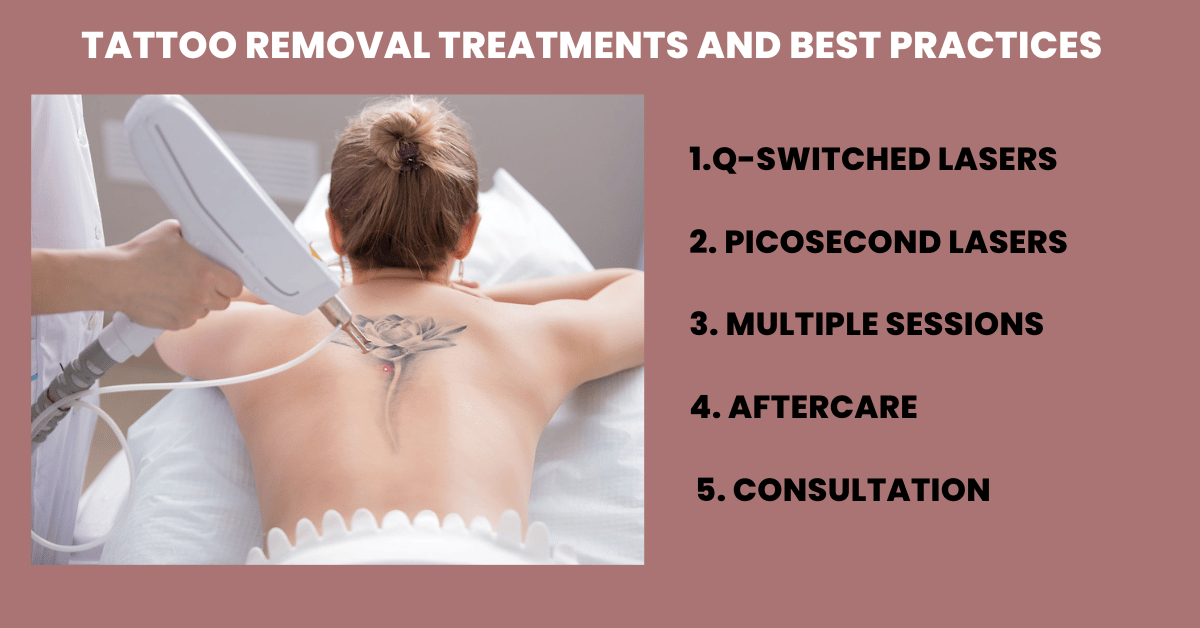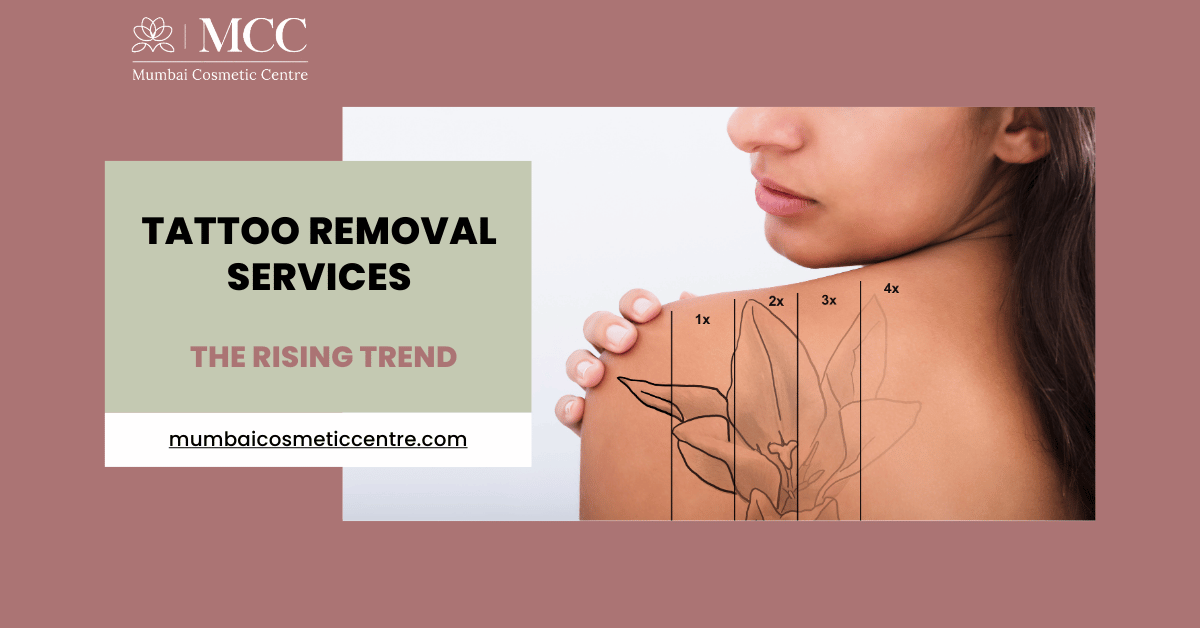Tattoos have become a popular form of self-expression and body art in recent decades. Many people choose to ink their skin to commemorate special moments, express individuality, or showcase personal beliefs. However, not all tattoos remain a perfect fit for a person’s life as time passes. Changing tastes, professional needs, or personal reasons can lead individuals to consider removing their tattoos.
Tattoo removal services are gaining attention as more people seek to erase or fade unwanted ink. This blog will explore the basics of tattoo removal, common concerns, available treatments, and expert advice for those considering this option. If you are thinking about tattoo removal, this guide will provide you with clear, practical information to help you make informed decisions.
Understanding Tattoo Removal: Basics and Concepts

Tattoos are created by injecting ink into the skin’s dermis layer. This ink remains permanent because it settles beneath the epidermis, the outermost layer. Tattoo removal is the process of breaking down these ink particles so the body can naturally clear them away.
The most common method of removal today is laser treatment. Laser tattoo removal works by sending high-intensity light pulses into the skin. These pulses target the ink pigments, fragmenting them into smaller particles. The immune system then removes these fragments over weeks or months.
Other terms related to tattoo removal include:
- Laser types: Different lasers target specific ink colors more effectively.
- Sessions: Tattoo removal usually requires multiple treatments spaced weeks apart.
- Fading: Some people seek to fade tattoos rather than remove them entirely, to cover them with new art.
Laser removal is generally safe but requires professional handling to minimize risks like scarring or skin discoloration.
Why Do People Choose to Remove Tattoos? Common Concerns
Several reasons motivate individuals to seek tattoo removal. These include:
- Change in personal style or preference: What seemed meaningful years ago may no longer fit a person’s current lifestyle or values.
- Career requirements: Some workplaces or professions have strict policies about visible tattoos.
- Poor tattoo quality: Fading, blurring, or amateur tattoo work can lead to dissatisfaction.
- Life changes: Relationships, cultural beliefs, or social factors may influence the desire to remove a tattoo.
- Health concerns: Allergic reactions or skin problems related to tattoo ink sometimes prompt removal.
People often worry about pain, cost, and effectiveness of removal. The process can cause discomfort similar to the sensation of a rubber band snapping against the skin. The total number of sessions depends on tattoo size, colors, and depth of ink.
Tattoo Removal Treatments and Best Practices
Laser removal is the most widely used and effective technique. Here are the main treatment options and recommendations:

- Q-switched lasers: These are designed to deliver short, powerful pulses and are effective for most colors.
- Picosecond lasers: These newer lasers use even shorter pulses, improving effectiveness on stubborn ink colors.
- Multiple sessions: On average, 6 to 12 sessions are needed, spaced 6 to 8 weeks apart to allow healing.
- Aftercare: Proper skincare after sessions is essential. Avoid sun exposure, keep the area clean, and follow your provider’s instructions.
- Consultation: Always consult a certified dermatologist or cosmetic surgeon before starting treatment to assess tattoo characteristics and skin type.
Other less common methods like dermabrasion or surgical excision exist but carry more risks and longer recovery times.
Tips and Expert Recommendations for Successful Removal
Choosing the right clinic and professional can make a difference in the outcome:
- Check the provider’s qualifications and experience with tattoo removal.
- Avoid clinics that promise instant removal; it is a gradual process.
- Manage expectations: complete removal is not guaranteed, especially for multi-colored or deep tattoos.
- Inform the practitioner about your medical history, skin sensitivities, or any medications.
- Maintain healthy skin by staying hydrated and avoiding harsh skin products before sessions.
Tattoo removal is an investment of time and patience, but with the right approach, it can restore your skin’s natural appearance.
Consultation with Mumbai Cosmetic Centre
Mumbai Cosmetic Centre offers a range of beauty treatments, including advanced tattoo removal services. Located in Malad West, the centre is equipped with the latest laser technologies and staffed by skilled professionals.
Dr. Shruti Shah leads the cosmetic gynecology and beauty division. She specializes in non-surgical HIFU vaginal tightening, hymenoplasties, and combines conventional and modern techniques for best results. Dr. Chetan Shah, a board-certified anesthesiologist, supports procedures with patient safety and comfort in mind.
Services include Face HIFU, upper lip and full-body hair reduction, and tattoo removal. The clinic ensures personalized care for every patient.
For appointments, visit Mumbai Cosmetic Centre at 1st Floor, Milap Apt, Swami Vivekananda Rd, opposite Milap PVR Cinemas, Malad West, Mumbai, Maharashtra 400064.
Contact: +91-7400188399
Email: mccmumbaicosmeticcentre@gmail.com
Frequently Asked Questions (FAQs)
Q1: Is tattoo removal painful?
A1: Most patients feel mild to moderate discomfort during laser sessions. The sensation is often compared to a snapping rubber band.
Q2: How many sessions will I need?
A2: The number varies by tattoo size, colors, and skin type. Generally, 6 to 12 sessions are required.
Q3: Can all tattoo colors be removed?
A3: Dark colors like black and blue respond best. Reds, greens, and yellows can be more challenging but may fade with advanced lasers.
Q4: Is laser tattoo removal safe?
A4: When done by a trained professional, laser removal is safe with minimal risk of scarring or infection.
Q5: What should I do after a session?
A5: Keep the area clean, avoid sun exposure, and follow your provider’s aftercare instructions carefully.
Q6: Are there alternatives to laser removal?
A6: Options like dermabrasion or surgical excision exist but have higher risks and are less common.
Q7: How much does tattoo removal cost?
A7: Costs depend on tattoo size, number of sessions, and clinic location. A consultation will provide an accurate estimate.
Q8: Can tattoo removal completely erase my tattoo?
A8: Many tattoos can be removed or faded significantly, but complete removal is not guaranteed in all cases.
Tattoo removal services are increasingly popular as more people seek flexibility over their body art. Understanding the process, options, and realistic outcomes helps you make the right choices. Consulting experienced professionals ensures safe treatment and better results. If you are ready to remove or fade an unwanted tattoo, expert clinics like Mumbai Cosmetic Centre provide trusted care with advanced technology and personalized attention.
